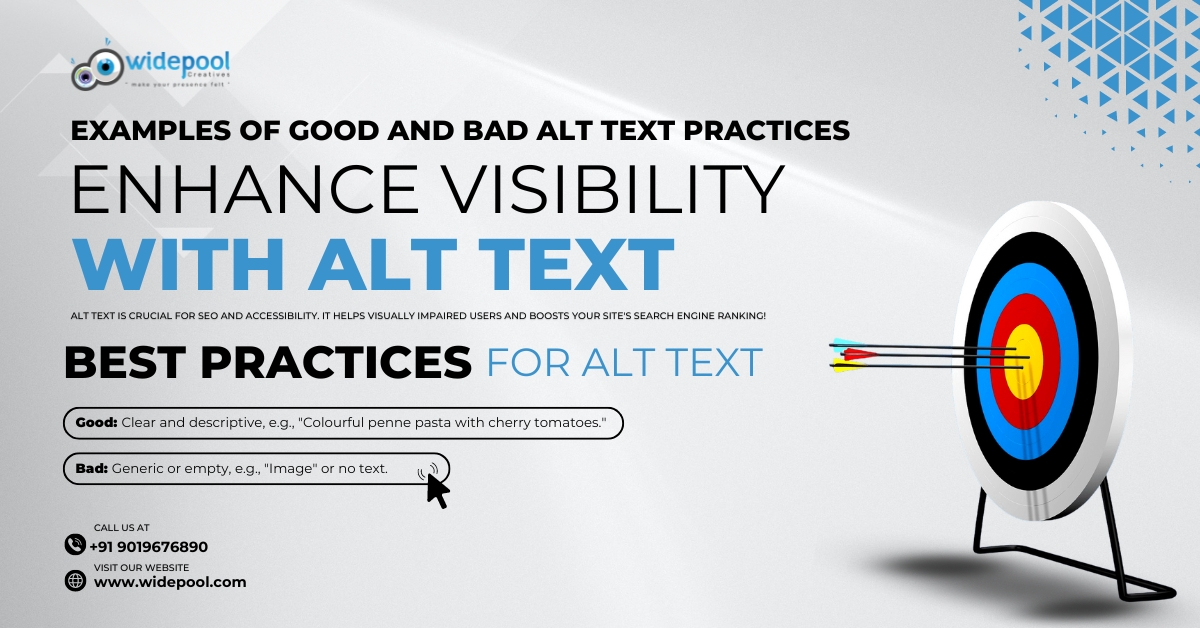SEO
Search engine optimization (abbreviated to SEO) is all about making websites’ content much simpler to find by search engines like Google. This includes the often-overlooked optimization of images. Websites are full-potential SEO treasure troves, but the images that are uploaded on these websites are often the aspects that are usually overlooked. Attractive images are great, but search engines can’t see them. This is where alt text comes in! It happens to the hidden gem of SEO that plays a key role in improving your website rankings & accessibility. It is like a translation feature, which describes your image to search engines as well as to screen readers. Alt text helps visually impaired users in understanding your content. It also has advantages in better indexing of your websites by search engines. This potentially augments your rankings & overall accessibility.
Alt Texts
Alt text (short for “alternative text”) is not just another fancy name! In fact, it happens to be the short descriptions of images that are displayed for visually impaired users or for screen readers these images fail to load. Simply put, a voice behind an image brings context & clarity to what might seem mysterious. This is actually the texts that replace images on websites. Think of a screen reader for a visually impaired user or a situation where some images fail to load! In those types of cases, alt texts act as the voices that describe the content of the images. Essentially, these texts breathe life into otherwise empty spaces, thus giving out important context & clarity to users who cannot see the images themselves.
Examples of Good and Bad Alt text Practices
Seeing is believing! Good alt texts enhance SEO & augment accessibility. Remember that good alt texts are informative, crisp, and fused in with relevant keywords. Writing alt texts enhances accessibility for everyone, even for the visually impaired users; and also helps search engines to understand your image content better. So, how can you write good alt texts & avoid the pitfalls of bad practices? Here is a quick guide on good and bad alt text practices:
- Good: Descriptive yet crisp: Instead of writing “Image of a pasta plate,” try something like “Close-up of a colourful penne dish with cherry tomatoes & fresh basil,” so users can clearly understand what your image is all about.
- Bad: Generic & uninformative: Avoid using generic terminologies like “images” or “photos.” Screen readers will read such words out loud, anyway, making alt texts unnecessary.
- Good: Relevant keywords (but not stuffed): Using relevant keywords could be very useful but avoid keyword stuffing. Focus on accurate descriptions of your images and your keywords should naturally fit in.
- Bad: Empty Alt Text: A big NO! Leaving the alt text fields empty is totally a missed opportunity! Even for decorative images, short descriptions improve SEO & usability.
Contact Widepool Creatives for Best SEO Services
Do you wish to take your SEO to the next level with professional image optimization? Then, your best bet would be to contact Widepool Creatives! Our team of SEO mavens will run an SEO marathon for you in the most expert manner to make sure that your website images are not only visually appealing but also optimized for search engines as well as accessibility. So, let us work together to get your website seen & heard equally well!

